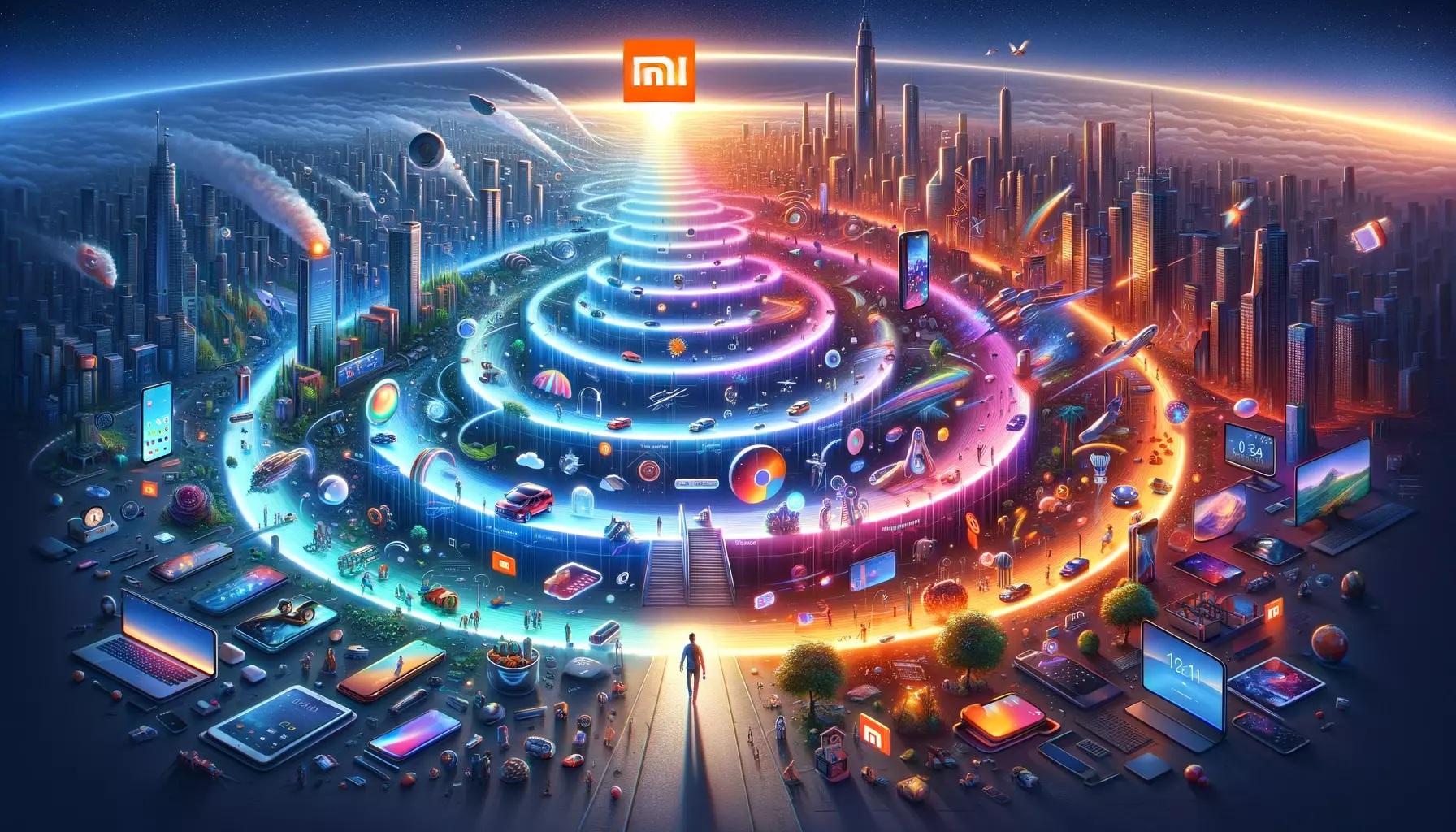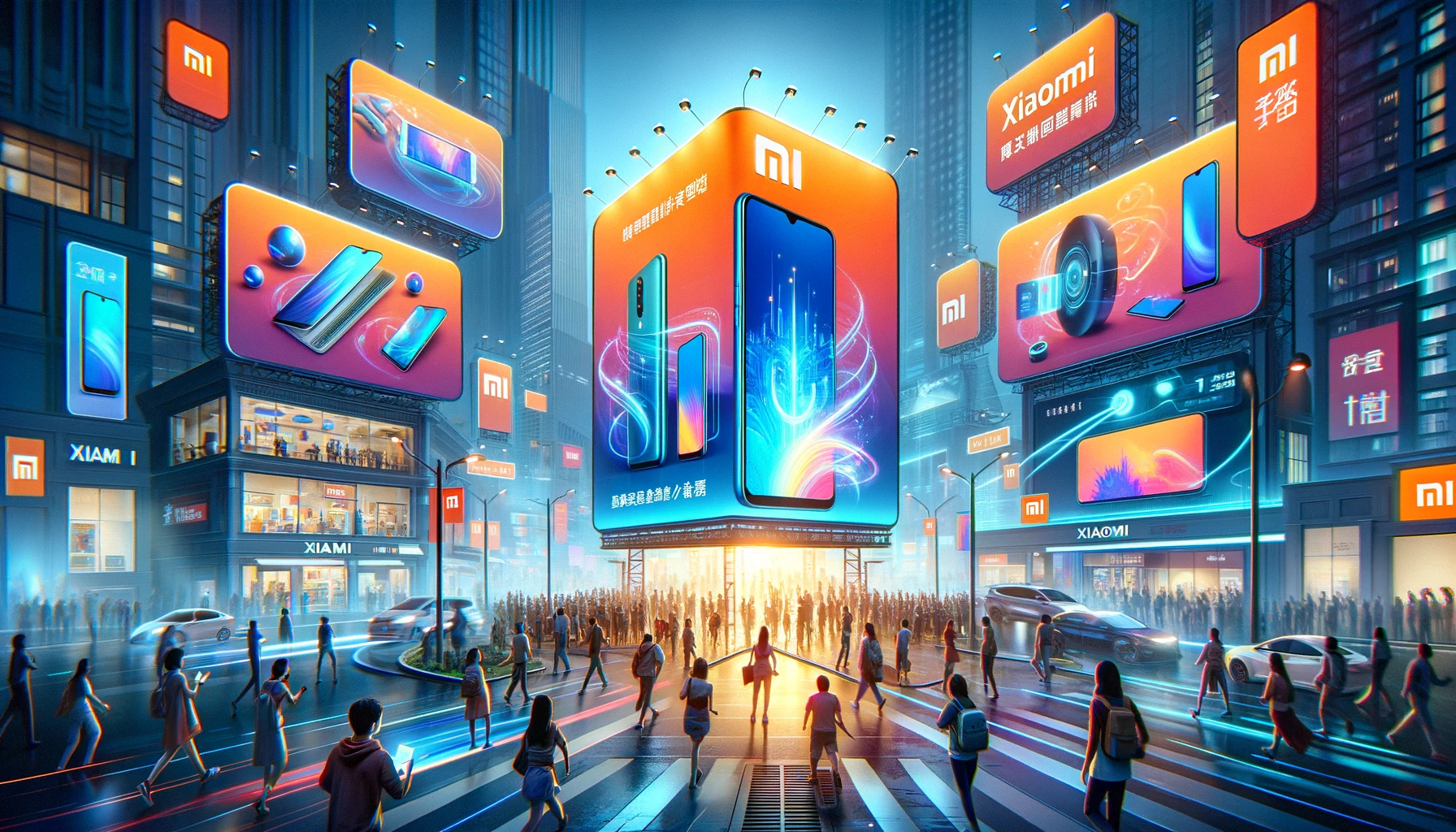Xiaomi marketing strategy is a paradigm of cost-effectiveness, digital engagement, and user-centric innovation.
Xiaomi builds brand loyalty and drives sales by leveraging social media, word-of-mouth, digital marketing and community involvement. This approach minimizes traditional advertising costs, allowing for competitively priced products.
Xiaomi's strategy underscores Xiaomi's ascent from a start-up to a global tech powerhouse, emphasizing the significance of aligning product quality with smart marketing strategies and tactics.
Xiaomi Core Marketing Strategy

Xiaomi marketing strategy centers on cost-effectiveness, community engagement, and leveraging innovative technology, to create brand loyalty.
This approach has positioned Xiaomi as a leading technology brand, known for its high-quality, affordable products and a strong connection with its consumer base.
Cost-Effectiveness
Flash Sales and Online Retail: Xiaomi initially capitalized on online flash sales to sell its products, creating a sense of urgency and exclusivity. This method not only reduced inventory costs but also sparked interest and demand among consumers.
Xiaomi's flash sale for the Mi 3 in India sold out in just a few seconds on Flipkart, creating a record and immense buzz around the brand.
Direct-to-Consumer Model: By selling primarily through its online platforms, Xiaomi saves on the costs associated with traditional retail channels, allowing it to offer competitive prices. This more affordable pricing strategy has been crucial in markets sensitive to price, such as India and China.
Community Engagement
MIUI Forum: Xiaomi has built a robust online community through the MIUI forum, where users can provide feedback, receive support, and participate in the development process of MIUI, Xiaomi's custom Android OS. This fosters a sense of belonging and loyalty among Xiaomi users.
Fan Events and Meetups: Xiaomi organizes fan events and meetups to engage with its community in person. These events serve as platforms for product launches, feedback sessions, and fostering brand ambassadors.
Xiaomi's "Mi Fan Festival" is an annual event celebrating its founding anniversary with discounts, and new product launches, engaging millions of fans worldwide.
Technology and Innovation
R&D Investment: Xiaomi invests significantly in research and development to innovate and improve its products continuously. This commitment to technology ensures that Xiaomi devices often include features comparable to high-end devices at a fraction of the cost.
Ecosystem Strategy: Xiaomi has developed a wide range of smart home and lifestyle products that integrate seamlessly with each other, creating an ecosystem that encourages users to buy more Xiaomi products.
Online Marketing and Social Media
Social Media Campaigns: Xiaomi utilizes social media platforms effectively to announce new products, promotions, and engage with potential customers directly.
Influencer Partnerships: Collaborations with tech bloggers, influencers, and brand ambassadors help Xiaomi reach wider audiences. These partnerships provide authentic reviews and demonstrations of Xiaomi products.
Xiaomi marketing strategy is a multifaceted approach focusing on cost-effective, distribution strategy, active community engagement, continuous technological innovation, and dynamic online marketing. This strategy has enabled Xiaomi to take market share, establish a strong global presence and maintain rapid growth in the competitive tech industry.
History of Xiaomi: From a Start-Up to a Global Tech Powerhouse

Xiaomi's business history and evolution as a mobile internet company are deeply intertwined with its innovative marketing strategy.
Founded in 2010 by Lei Jun and a team of entrepreneurs, Xiaomi launched with the mission to offer high-quality smartphones at accessible prices, disrupting the traditional tech industry.
The company initially gained traction through online flash sales and a strong social media presence, directly engaging with its customer base.
Xiaomi's approach not only reduced inventory costs but also created brand awareness and generated a buzz around each product launch, establishing Xiaomi as a key player in the mobile internet company sector.
Xiaomi expanded its portfolio to include a wide range of smart home devices and internet services, leveraging its ecosystem to cross-sell products and enhance brand loyalty.
By focusing on user experience and customer feedback, Xiaomi continuously improved its offerings, leading to rapid growth.
The company's strategy of offering high-spec devices at competitive prices, coupled with its unique digital marketing strategies and approach, propelled Xiaomi to become one of the leading smartphone manufacturers globally.
Target Market Analysis
Xiaomi's success in product strategy and target market analysis reveals a strategic focus on tech-savvy consumers and value seekers across global markets.
Xiaomi caters to a younger demographic, including millennials and Generation Z, who prioritize innovation, quality, and affordability in their electronic devices.
This segment appreciates Xiaomi's unique blend of high-end features at competitive prices, making it a preferred choice for smartphones, wearables, and smart home devices.
In markets like India and China, Xiaomi has successfully tapped into the aspirations of a burgeoning middle class seeking premium technology without the premium price tag.
Xiaomi's marketing strategy leverages social media and online communities to engage and expand its customer base, resonating well with its target market's digital-native lifestyle.
Through flash sales and fan-based marketing, Xiaomi has not only fostered brand loyalty but also created a sense of exclusivity and community among its users.
Xiaomi Marketing Mix
The Xiaomi marketing mix is a strategic blend of product, price, place, and promotion that underpins Xiaomi's position as a leading technology company. This marketing mix framework is carefully designed to appeal to Xiaomi's target market, leveraging cost-efficiency, innovation, and user engagement to compete in the global electronics market.
Product
Xiaomi's product strategy focuses on offering high-quality smartphones, smart home devices, and lifestyle products that integrate seamlessly with each other.
The brand is renowned for its MIUI operating system, which offers a customized, user-friendly experience on its devices.
Xiaomi continually invests in research and development to introduce innovative features, such as high-resolution cameras and long-lasting battery life, ensuring their products meet the evolving needs of consumers.
Price
Xiaomi adopts a cost-leadership pricing strategy, offering premium technology at competitive prices.
The company minimizes overhead costs by leveraging online sales channels, allowing it to price its products more affordable than many competitors.
Flash sales and limited-time offers on new products generate buzz and drive sales, making high-quality technology accessible to a broader audience.
Place
Xiaomi primarily sells its products through online channels, including its own e-commerce platform, Mi.com, and popular third-party retailers.
The company has also started expanding its presence with Mi Home stores in select markets, providing a physical space for customers to experience products first hand.
Xiaomi's global expansion strategy has been carefully executed, targeting markets in Asia, Europe, and beyond, all emerging markets where there is high demand for affordable technology.
Promotion
Xiaomi's promotional strategy relies heavily on social media, word-of-mouth, and fan communities to spread brand awareness and loyalty, exemplifying Xiaomi's social media marketing expertise.
The company hosts product launch events that are streamed online, engaging a global audience, a key aspect of Xiaomi's social media marketing strategy.
Xiaomi encourages user participation through online forums and social media, where customers can provide feedback, participate in contests, and stay updated on new releases, showcasing the effective use of Xiaomi social media marketing to foster community engagement.
What is the Unique Selling Proposition and Brand Positioning of Xiaomi?
Xiaomi's brand positioning and brand campaigns are pivotal elements of its marketing strategy, emphasizing innovation, affordability, and a user-centric approach.
Brand Positioning
Innovation and Quality at Affordable Prices: Xiaomi positions itself as a brand that democratizes technology, offering the latest innovations in smartphones, smart home devices, and other electronics at accessible price points. This approach appeals to a broad audience, from tech enthusiasts to budget-conscious consumers.
User-Centric Philosophy: Central to Xiaomi's brand positioning is its commitment to listening to and engaging with its users. The brand leverages social media and online forums to gather feedback and incorporate user suggestions into product development and enhancements.
Community Engagement: Xiaomi builds brand loyalty by fostering a sense of community among its users. The brand hosts fan events, online forums, and engages in social listening to strengthen its relationship with customers.
Xiaomi's Brand Campaigns: Connecting Technology and Lifestyle

Xiaomi’s brand campaigns reflect its positioning and aim to deepen its connection with consumers.
"More Than Smartphones": This campaign highlights Xiaomi's diverse ecosystem of products, showcasing how its technology integrates into every aspect of life. Through engaging visuals and storytelling, Xiaomi illustrates the versatility and interconnectedness of its smart devices, from fitness bands to smart home products.
"Innovation for Everyone": Focused on making cutting-edge technology accessible, this campaign features stories of how Xiaomi’s innovations impact people's lives positively. It includes testimonials and user stories to highlight the practical benefits of its products in everyday scenarios.
Flash Sales and Online Events: Xiaomi utilizes flash sales and online launch events to generate buzz and excitement around new product releases. These campaigns are often accompanied by limited-time offers, enhancing the appeal and urgency to buy.
User Engagement Campaigns: Xiaomi frequently runs contests, giveaways, and interactive campaigns on social media to engage its community. Examples include photography contests using Xiaomi smartphones and challenges that encourage the use of its smart home products.
Global Expansion Campaigns: As part of its global expansion strategy, Xiaomi tailors its campaigns to resonate with local markets. For instance, in India, the brand celebrated the festival of Diwali with a special sale and launched products catering to local preferences and needs.
Successful Xiaomi Campaigns
#ShotByMi Photography Challenge: A global campaign encouraging users to submit photos taken with Xiaomi phones. It not only showcased the camera quality of Xiaomi smartphones but also engaged the global community in a creative endeavour.
"Mi Fan Festival": An annual event celebrating Xiaomi’s anniversary with fans around the world. Special offers, and new product launches are part of the festivities, driving engagement and sales.
In summary, Xiaomi's brand positioning and campaigns are intricately designed to reinforce its image as an innovative, affordable, and user-centric brand. Through strategic marketing initiatives, Xiaomi continues to expand its global footprint while maintaining a strong connection with its consumer base.
Key Takeaways from Xiaomi Marketing Strategy
- Xiaomi's use of online sales channels serves as a model for cost-efficient product distribution, enhancing market reach.
- The brand's community-focused activities, including forums and fan events, underline the importance of customer engagement in building loyalty.
- Xiaomi's strategic investment in R&D highlights its commitment to innovation, ensuring its products remain competitive and appealing to a tech-savvy audience.
FAQs on Xiaomi Marketing Strategy
What is Xiaomi's marketing strategy?
Xiaomi's marketing strategy leverages online platforms and word-of-mouth to promote its products, focusing on high-quality, tech-driven devices at competitive prices. This approach minimizes traditional advertising costs, allowing for an affordable pricing strategy that appeals to tech-savvy consumers, especially in emerging markets.
What are the 4Ps of Xiaomi?
- Product: Innovative technology products.
- Price: Affordable pricing strategy.
- Place: Online sales channels and select physical stores.
- Promotion: Social media, word-of-mouth, and flash sales.
What is the positioning strategy of Xiaomi?
Xiaomi positions itself within its business model as a provider of high-quality, innovative technology products at affordable prices, targeting consumers who desire premium tech experiences without the premium price tag, especially in emerging markets. This approach underscores its business model's focus on balancing innovation with affordability to cater to a broad consumer base.
Who is Xiaomi's target market?
Xiaomi's target market includes tech-savvy, value-conscious consumers, predominantly young adults and professionals in emerging markets looking for high-quality technology products that offer exceptional value for money.



 Entrepreneurship
Entrepreneurship

